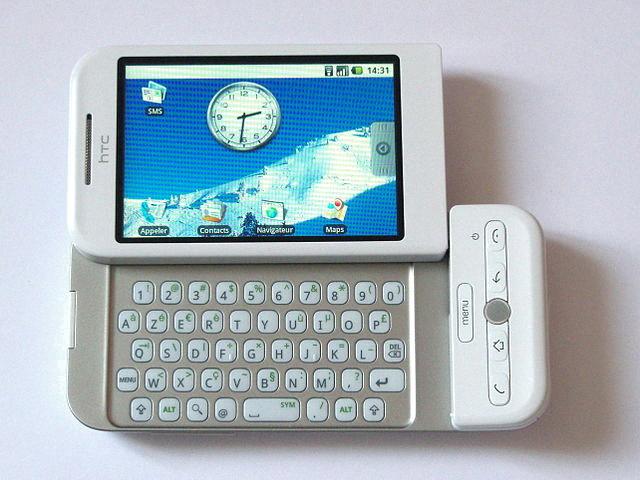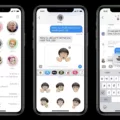The HTC Dream, also known as the T-Mobile G1, holds a significant place in the history of smartphones. As the first Android phone, it paved the way for the revolutionary operating system that now dominates the mobile market.
Released in 2008, the HTC Dream was a groundbreaking device that introduced many features we now take for granted. While it may be hard to imagine now, the Dream had a physical slide-out keyboard, a feature that was highly sought after at the time. This allowed users to have a tactile typing experience, a notable advantage over the touch-only devices available at the time.
The Dream also boasted a 3.2-inch touchscreen display, which, although small by today’s standards, was considered impressive back then. It offered a resolution of 320×480 pixels, providing users with a decent visual experience for browsing the web and viewing multimedia content.
Under the hood, the HTC Dream was powered by a 528 MHz Qualcomm processor and 192 MB of RAM. While these specifications may seem modest compared to today’s smartphones, they were more than sufficient for the time. The device also came with a 3.2-megapixel camera, which allowed users to capture photos and videos on the go.
One of the key selling points of the HTC Dream was its integration with the Android operating system. Developed by Google, Android brought a fresh approach to mobile software. It offered a customizable user interface, allowing users to personalize their devices to suit their preferences. Additionally, Android introduced the concept of widgets, which provided quick access to information and functionality right on the home screen.
The Dream also marked the beginning of the Android app ecosystem. Users could download and install various applications from the Android Market (now known as Google Play Store), expanding the capabilities of their device. This was a game-changer, as it provided a platform for developers to create innovative and useful apps that enhanced the overall smartphone experience.
While the HTC Dream may not resemble the sleek and powerful smartphones we use today, it was a trailblazer that laid the foundation for the Android revolution. Its introduction marked the beginning of a new era in mobile technology, where open-source software and customization became the norm.
Fifteen years later, Android has evolved into the most widely used mobile operating system worldwide. It has not only transformed the smartphone industry but has also expanded into other devices such as tablets, smartwatches, and smart TVs. The success of Android has propelled Google to become a dominant force in the tech industry, generating billions in revenue and profit.
As we celebrate the 15th anniversary of the original Android phone, it’s important to recognize the pivotal role the HTC Dream played in shaping the mobile landscape we know today. While it may be a far cry from the sleek and powerful devices we carry in our pockets now, it will always hold a special place in the hearts of tech enthusiasts and serve as a reminder of how far we’ve come.
Which Was First Android Phone?
The first Android phone, known as the HTC Dream or T-Mobile G1, was released 15 years ago on September 23, 2008. It was initially launched as the Dream in Europe and then as the T-Mobile G1 in the United States a few weeks later. This device holds a significant place in smartphone history as it was the first-ever phone to run on the Android operating system. Let’s delve into some key details about this groundbreaking device:
– The HTC Dream / T-Mobile G1 had a slide-out physical QWERTY keyboard, which was a prominent feature at the time, as touchscreen keyboards were not yet widely adopted.
– It sported a 3.2-inch HVGA touchscreen display with a resolution of 320 x 480 pixels. Although the screen size may seem small by today’s standards, it was quite impressive back then.
– The device was powered by a 528 MHz Qualcomm MSM7201A processor and came with 192 MB of RAM. It also offered expandable storage via a microSD card slot.
– The HTC Dream / T-Mobile G1 ran on Android 1.0, which was the first version of the Android operating system. This version introduced several key features that are now commonplace, such as the notification shade and the ability to download and install applications from the Android Market (now known as Google Play Store).
– In terms of connectivity, the phone supported 3G networks, Wi-Fi, Bluetooth, and GPS. It also had a 3.2-megapixel rear camera, which was considered decent at the time.
– The device received mixed reviews upon its release. While some praised its open-source nature and potential for customization, others criticized its bulky design and lack of polish compared to competitors like the iPhone.
– Despite its shortcomings, the HTC Dream / T-Mobile G1 marked the beginning of the Android revolution, paving the way for the diverse range of Android smartphones that we enjoy today.
The HTC Dream / T-Mobile G1 holds the honor of being the first Android phone ever released. Although it may not meet the standards and expectations we have for smartphones today, its impact on the industry cannot be understated.

What Was The First Verizon Android Phone?
The first Verizon Android phone was the Droid. It was released on November 6, 2009, just under a month after Verizon and Google announced their partnership to develop wireless devices based on the Android mobile platform. The Droid was a significant milestone in the history of Verizon as it marked their entry into the Android smartphone market.
Here are some key details about the Droid:
– Release Date: November 6, 2009
– Collaboration: Verizon and Google jointly developed the Droid as part of their agreement to create Android-based wireless devices.
– Android Platform: The Droid was powered by the Android operating system, which provided users with access to a wide range of apps and features.
– Features: The Droid offered a full QWERTY keyboard, a 3.7-inch touchscreen display, a 5-megapixel camera, and support for high-speed 3G connectivity.
– Marketing Campaign: The Droid was heavily promoted with the famous “Droid Does” advertising campaign, highlighting its capabilities and features.
– Success: The Droid was a commercial success for Verizon, helping to establish Android as a major player in the smartphone market.
The release of the Droid marked a significant moment for Verizon and Android, paving the way for the subsequent success and popularity of Android devices on the Verizon network.
How Much Money Is Android Worth?
According to court documents from Oracle’s case against Google, the Android operating system has generated a staggering $31 billion in revenue for Google. On top of that, Android has also brought in an impressive $22 billion in profit. These numbers highlight the significant value that Android holds for Google.
To put it into perspective, here is a breakdown of the financial worth of Android:
Revenue:
– Android has generated a massive $31 billion in revenue for Google.
– This amount signifies the total income generated by Android through various channels, such as app sales, advertising, and licensing fees.
Profit:
– Android has yielded a remarkable $22 billion in profit for Google.
– Profit represents the amount of money left over after deducting all expenses related to Android’s development, maintenance, and marketing.
These figures demonstrate the financial success of the Android operating system. Google’s ability to monetize Android through various revenue streams, including app sales from the Google Play Store and advertising revenue from mobile apps and services, has led to substantial profits for the company.
It’s important to note that these numbers are specific to Google’s revenue and profit from Android alone. They do not take into account the overall value of the Android ecosystem, including the revenue generated by app developers, device manufacturers, and other stakeholders within the Android ecosystem.
Android is worth a significant amount of money to Google, with $31 billion in revenue and $22 billion in profit. These figures highlight the financial success of the Android operating system and its importance to Google’s overall business strategy.
Conclusion
The original Android phone, the HTC Dream / T-Mobile G1, holds a significant place in the history of smartphones. Despite being fifteen years old, it paved the way for the modern smartphones we use today. While it may be the opposite of what we desire in terms of sleek design and advanced features, its introduction marked the beginning of a new era in mobile technology.
The HTC Dream / T-Mobile G1 was the first device to run on the Android operating system, which has now become the most popular mobile operating system worldwide. Its release in 2008 brought a new level of customization and versatility to mobile devices, offering users the ability to personalize their experience through various applications and widgets.
Although the HTC Dream / T-Mobile G1 may seem outdated by today’s standards, it was a groundbreaking device at the time. Its physical keyboard, trackball, and slide-out display were seen as innovative features that set it apart from its competitors. It also introduced the concept of an app store, which has now become a standard feature on smartphones.
Since its launch, Android has continued to evolve and improve, with each new version offering enhanced features, better performance, and improved user experience. It has become the operating system of choice for many smartphone manufacturers, providing them with a flexible and customizable platform to build upon.
The success of Android cannot be understated. According to court documents, it has generated a staggering $31 billion in revenue and $22 billion in profit for Google. This highlights the immense value of the Android operating system to the company and its importance in the mobile industry.
The HTC Dream / T-Mobile G1 may not possess the sleekness and advanced capabilities of modern smartphones, but it will always hold a special place in the history of Android and the development of smartphones as we know them today. Its pioneering features and the success of the Android platform have shaped the mobile industry and continue to influence the technology we use.








